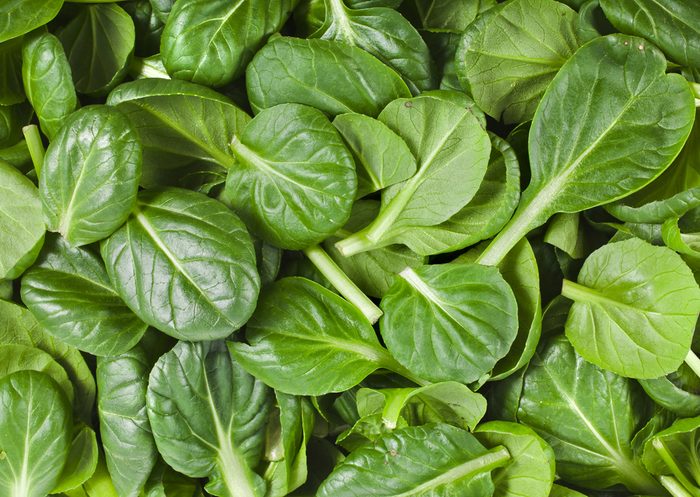
Leafy greens
Many leafy greens, including everything from arugula and kale to spinach and collard greens, contain potassium and magnesium, which are key minerals to control blood pressure, according to Harvard Medical School. These nutrients are an important part of the DASH diet (Dietary Approaches to Stop Hypertension, or high blood pressure), which features a variety of foods that lower blood pressure. A potassium-rich diet helps the body become more efficient at flushing out excess sodium, which can raise blood pressure, and magnesium helps promote healthy blood flow, according to Joy Bauer, RDN, former director of nutrition and fitness for the Department of Pediatric Cardiology at Mount Sinai Medical Center in New York City and the author of 12 books, including Joy’s Simple Food Remedies. Getting your blood pressure checked? Here’s what the numbers mean.
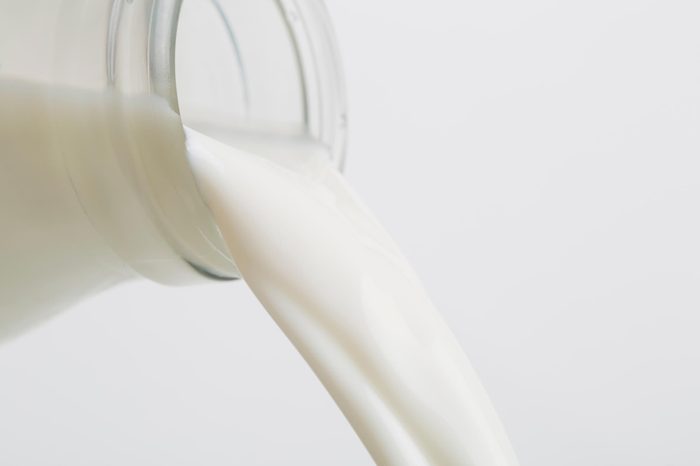
Skim milk
A glass of milk offers a solid serving of both calcium and vitamin D, nutrients that work as a team to help lower blood pressure by 3 to 10 percent, according to Bauer. Those numbers may not sound impressive, but they could translate to a 15 percent reduction in heart disease risk, she says. Several studies indicate that higher dietary intake of calcium is associated with lower systolic and diastolic blood pressure, according to the Linus Pauling Institute at Oregon State University. Don’t miss these 18 other natural remedies for high blood pressure.
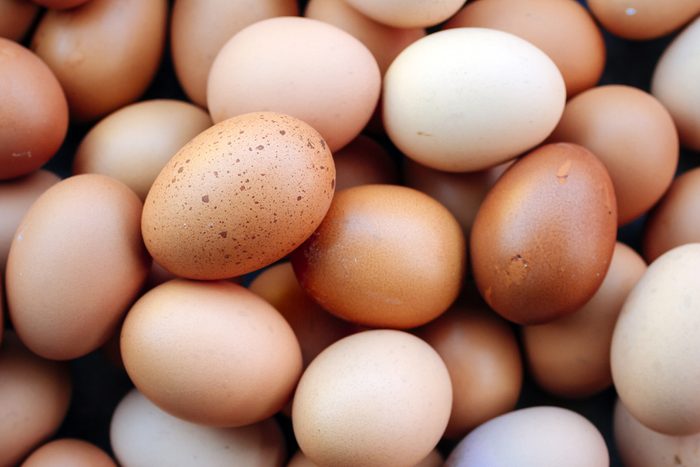
Eggs
If you think eggs are not heart-healthy, you should know that studies have shown that yolks don’t raise cardiovascular disease risk. Now, recent research published in the Journal of Agricultural Food Chemistry has found that egg whites deserve a place on the list of foods to lower blood pressure. When animals with high blood pressure were fed a protein found in egg whites, they experienced a drop in blood pressure that was comparable to a low dose of Captopril, a blood-pressure-lowering medication. Although more research is needed to confirm the link, the American Heart Association states that eggs can be part of a heart-healthy diet.
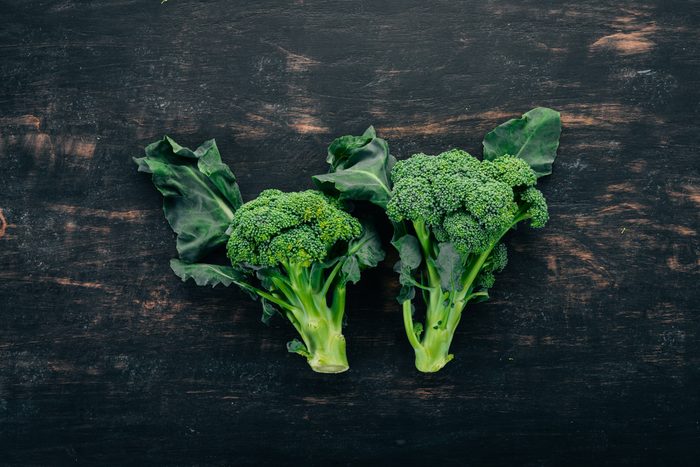
Broccoli
This cruciferous veggie is a good source of the blood pressure-regulating minerals magnesium, calcium, and potassium. In fact, many foods that lower blood pressure contain high amounts of those three minerals. A study in ISRN Pharmacology was the first to link sulforaphane, the main active ingredient in cruciferous vegetables (including broccoli and cauliflower) with a specific metabolic pathway that leads to a significant reduction in blood pressure. In addition, broccoli sprouts are high in compounds that may help reduce damage to arteries, which may play a role in high blood pressure. Combine walking – aka the new wonder drug — with a healthy diet and you’re well on your way to lower blood pressure.
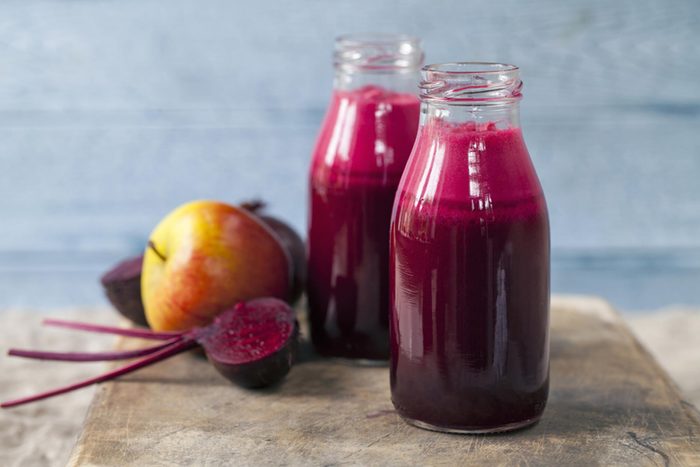
Beet juice
People with high blood pressure who drank a daily eight-ounce glass of beetroot juice experienced a decrease in blood pressure of about 10 mm Hg, according to a study published in the American Heart Association journal Hypertension. The magic ingredient? Nitrate, which turns into nitric oxide, a gas that widens blood vessels and aids blood flow. Watch out for these silent signs your heart trouble you shouldn’t ignore.
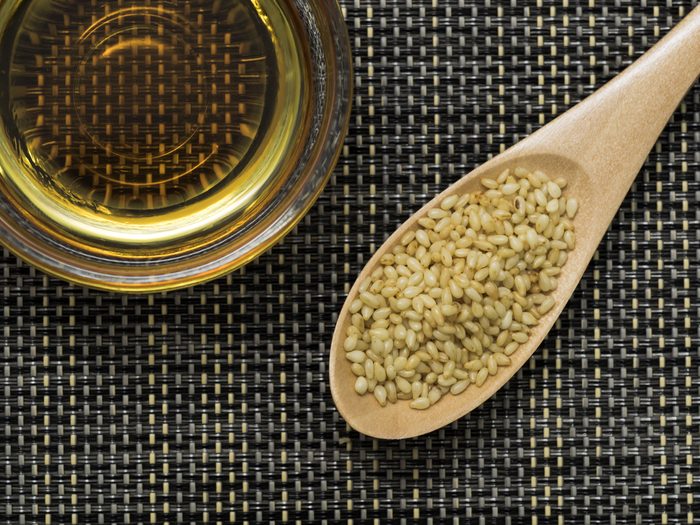
Sesame and rice-bran oils
In a study published in the Journal of Clinical Lipidology, cooking with a blend of the two oils (available at health food stores) was found to lower blood pressure in patients with mild to moderate hypertension. Researchers believe the effect is due to the oils’ fatty acids and antioxidants such as sesamin, sesamol, sesamolin, and oryzanol. You might also want to eat these foods that can help unclog your arteries.
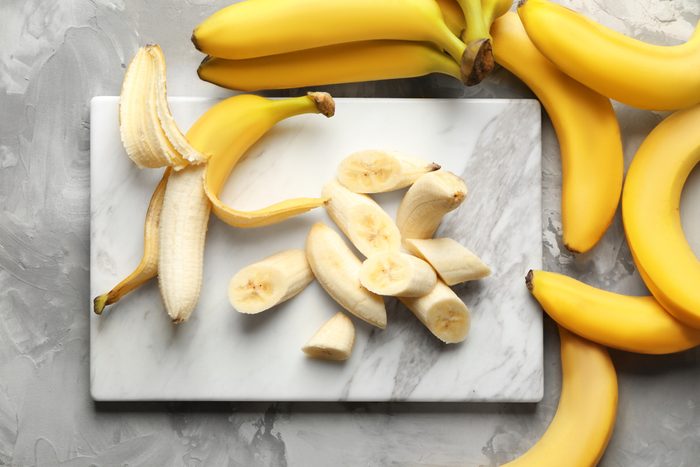
Bananas
Foods that lower blood pressure are usually high in potassium and similar nutrients. Many people recognize bananas as a rich source of potassium—and that’s accurate, given that each banana contains about 420 milligrams or 11 percent of the 4,700 milligrams the American Heart Association recommends that people consume daily. Surprisingly, however, many vegetables are actually higher in potassium than these popular fruits. A cup of Swiss chard boasts 960 milligrams, a cup of cooked white beans contains nearly 1,200 milligrams, and a whole avocado has 975 milligrams. Here are some healthy high-carb foods you can feel good about eating.
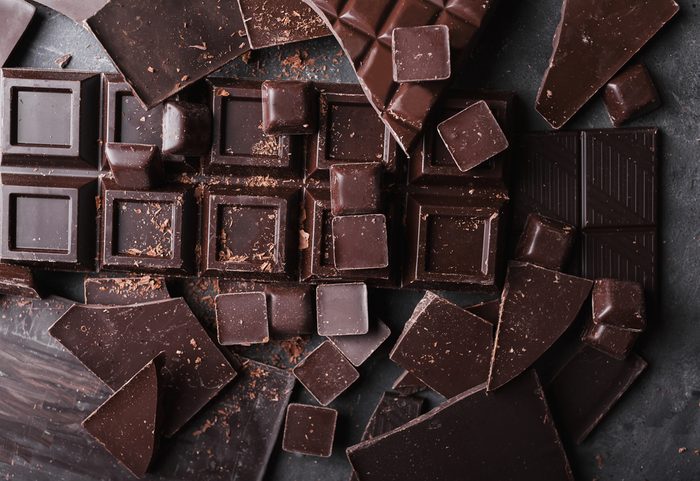
Dark chocolate
Foods that lower blood pressure and taste great? Dark chocolate is at the top of the list. This bittersweet food is rich in antioxidants called flavanols, which make blood vessels more elastic and have been shown in numerous studies to lower blood pressure, improve blood flow to the brain and heart, and make blood platelets less sticky and able to clot, according to the Cleveland Clinic. Also helpful: Combine it with almonds. A study in the Journal of the American Heart Association found that the two together may reduce the risk of heart disease. Stick to an ounce of dark chocolate per day, and make sure it contains at least 70 percent cocoa.
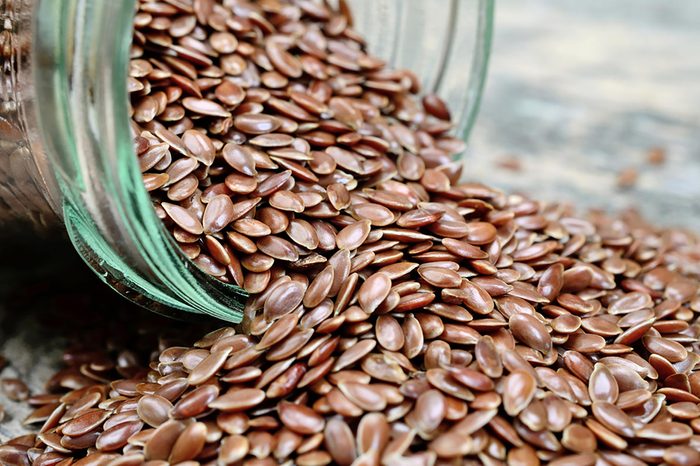
Flaxseed
Sprinkling ground flaxseed over your meals can make a big impact on your blood pressure readings. In a study published in the journal Hypertension, participants with high blood pressure and peripheral artery disease ate 30 grams (about an ounce) of milled flaxseed daily. After six months, their systolic blood pressure (the top number) decreased by 15 mm Hg, on average, and their diastolic blood pressure (the bottom number) dropped by 7 mm Hg. If you care about your health, you should also be aware of these numbers.
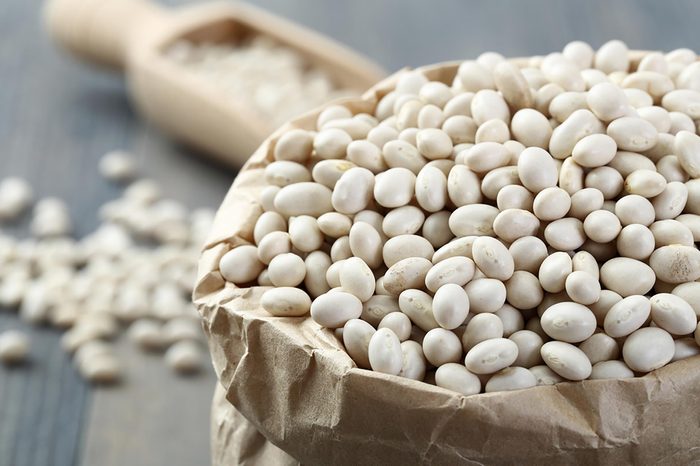
White beans
To lower blood pressure, it helps to eat foods high in at least two of these three minerals: calcium, magnesium, and potassium. With white beans, you hit the jackpot for all three. One cup contains 13 percent of the calcium, 30 percent of the magnesium, and 24 percent of the potassium needed for your daily recommended servings. The benefits are clear: A review of studies in the American Journal of Hypertension found that dietary pulses (the dry seeds of plants such as beans, peas, and chickpeas) significantly lowered blood pressure in people with and without hypertension.
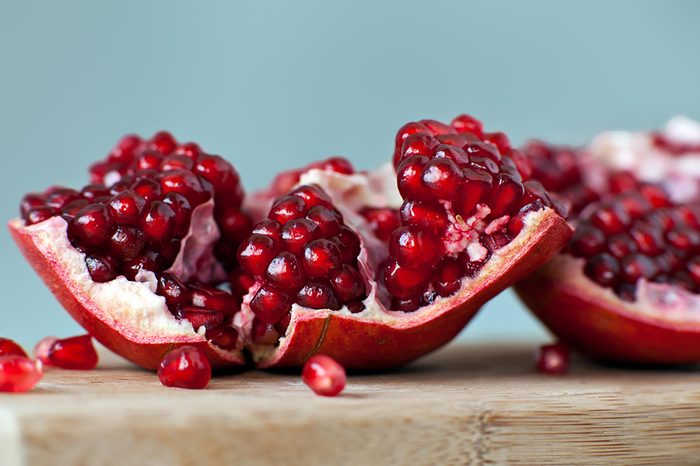
Pomegranates
A review of studies in Pharmacology Research found that drinking pomegranate juice reduced both systolic and diastolic blood pressure. “This evidence suggests it may be prudent to include this fruit juice in a heart-healthy diet,” the researchers concluded. So you may want to start swapping your morning orange juice for one-and-a-half cups of this heart-healthy alternative.
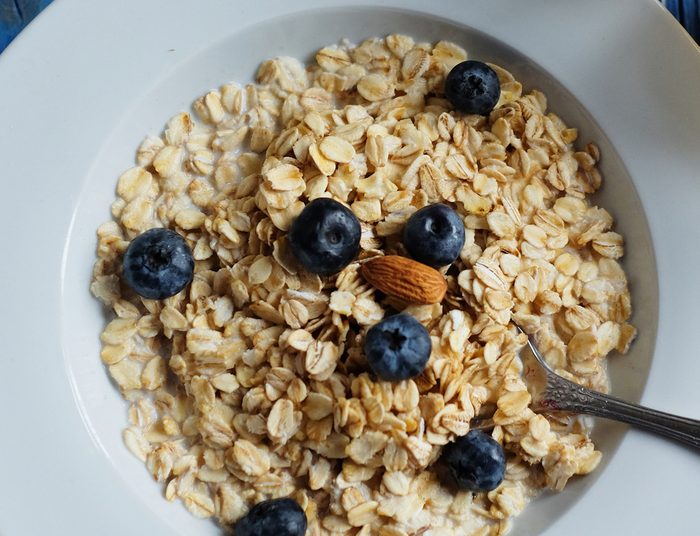
Oatmeal
A wide body of research has shown that eating oatmeal can lower systolic and diastolic blood pressure. One study published in the European Journal of Clinical Nutrition found that eating beta-glucan (a special fiber found in oats) every day lowered blood pressure in men and women who had elevated blood pressure. Another found that daily consumption of 5.5 g of beta-glucan from oats for six weeks reduced systolic and diastolic blood pressure by 7.5 and 5.5 points in people who had mild or borderline hypertension. Plus, the fiber can help you maintain a healthy body weight and prevent obesity, a risk factor for high blood pressure. Here are the top 10 questions about blood pressure, answered.
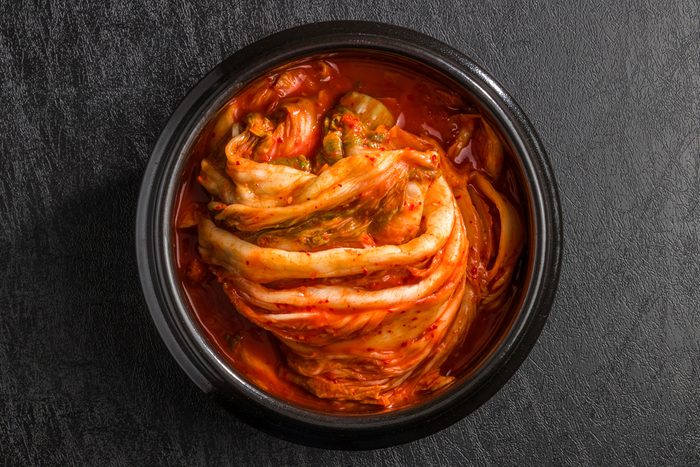
Fermented foods
Eating probiotic-rich foods has a modest effect on high blood pressure, according to a review of nine studies published in Hypertension. The study participants who saw a positive impact on their blood pressure consumed multiple species of probiotic bacteria regularly for more than 8 weeks. To boost your probiotic intake, try adding kimchi, kombucha, tempeh, and miso to your diet. Bear in mind, though, that fermented foods such as these may be heavy on the salt. That could backfire and can send your blood pressure higher.
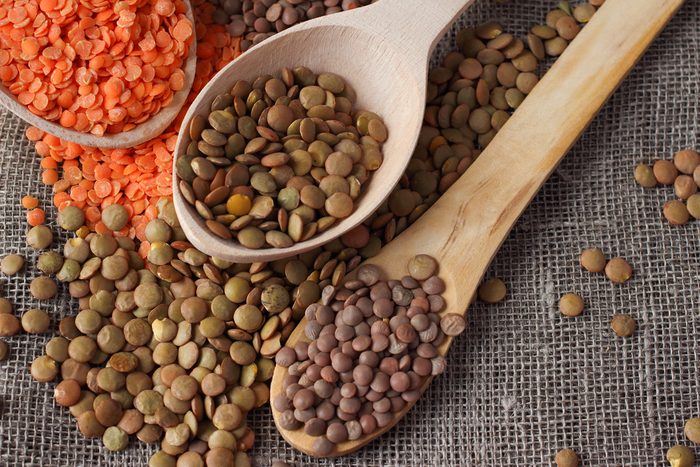
Lentils
Not only are lentils a great source of protein and fiber, but they can also affect blood pressure. This is thanks to potassium—100 grams of split red lentils have more potassium than a banana. In addition, dietary pulses (which include lentils) have been found to lower blood pressure.
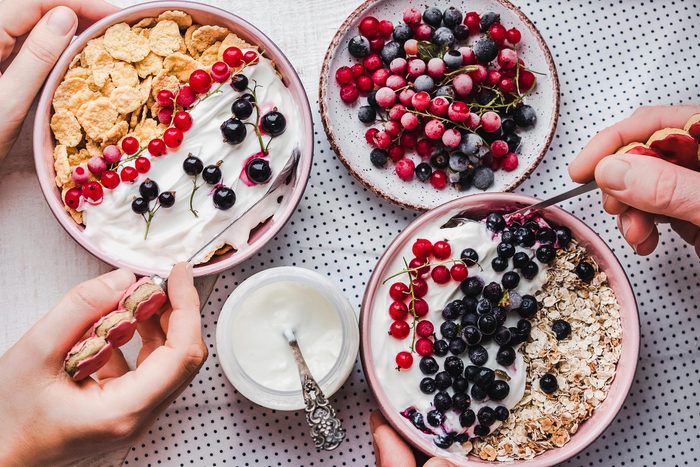
Yogurt
If you’re not a fan of skim milk, yogurt could be a great alternative to fulfill your daily dairy needs and help prevent or lower blood pressure. According to the American Heart Association, women who ate five or more servings of yogurt a week experienced a 20 percent reduction in their risk for developing high blood pressure. Dairy also contains calcium, which is essential for healthy blood pressure since the mineral helps blood vessels tighten and relax when necessary, according to Harvard Medical School.
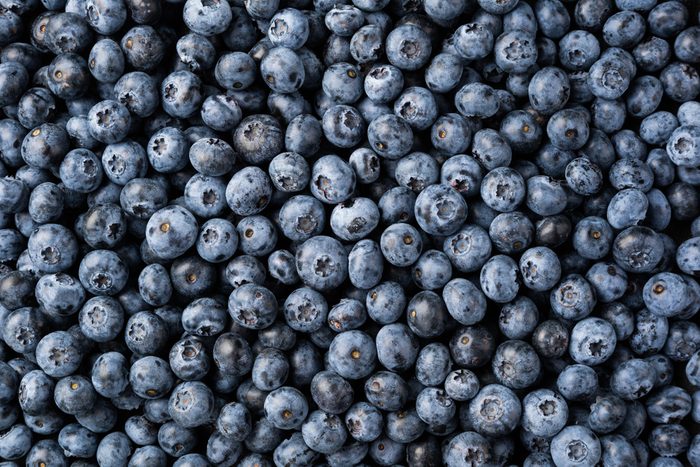
Berries
Flavonoids have been linked to lower blood pressure and hypertension. That’s why blueberries, blackberries, and other berries are good to have on hand to add to oatmeal, yogurt, or smoothies. One study found that people with hypertension who had the highest intake of antioxidants from berries reduced their risk of high blood pressure by 8 percent.
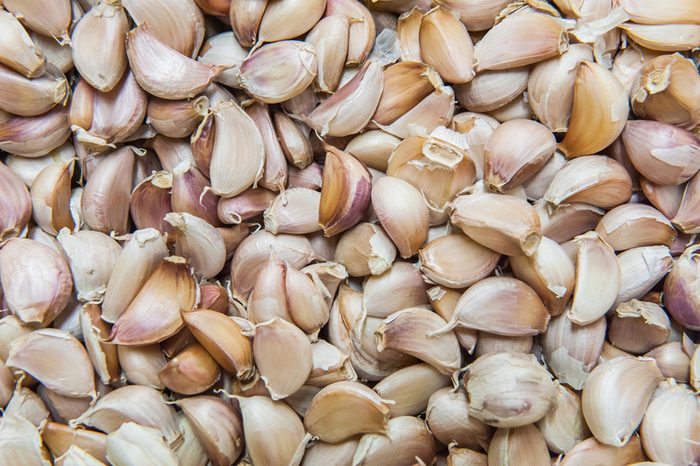
Garlic and herbs
Is there anything garlic can’t do? The vegetable is praised in natural medicine and is linked to lowering cholesterol and high blood pressure, too. This natural antibiotic has the active ingredient allicin to thank for its health benefits. A study in the journal Integrated Blood Pressure Control found that garlic reduced blood pressure by an amount similar to that achieved with standard blood pressure medications.
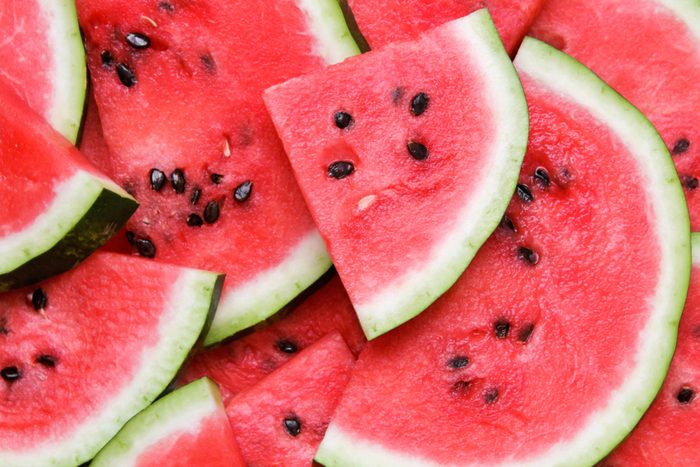
Watermelon
Some research on watermelon extract and high blood pressure suggests the amino acid citrulline found in the fruit may help manage high blood pressure. One study, in the American Journal of Hypertension, found those who took watermelon extract showed reduced blood pressure specifically in the ankles and arm arteries. Another found that watermelon reduced blood pressure in overweight individuals both at rest and while under stress.
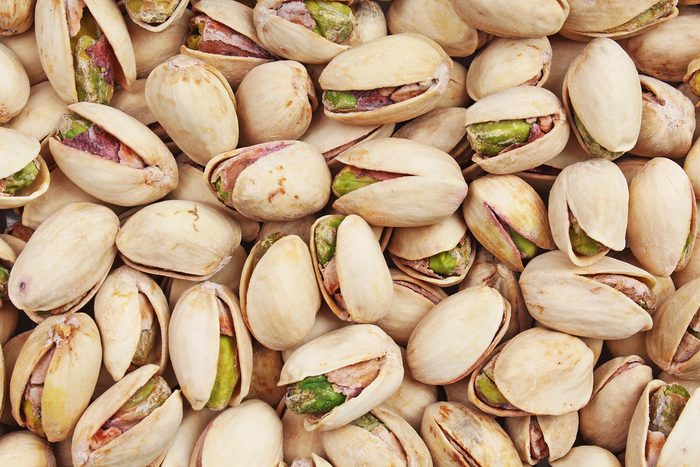
Pistachios
As little as one serving of pistachios a day could reduce blood pressure, according to research published in Hypertension. Another study in the same journal also found that the nut may lower blood pressure during stressful times thanks to its effect on blood vessel tightening and heart rate.
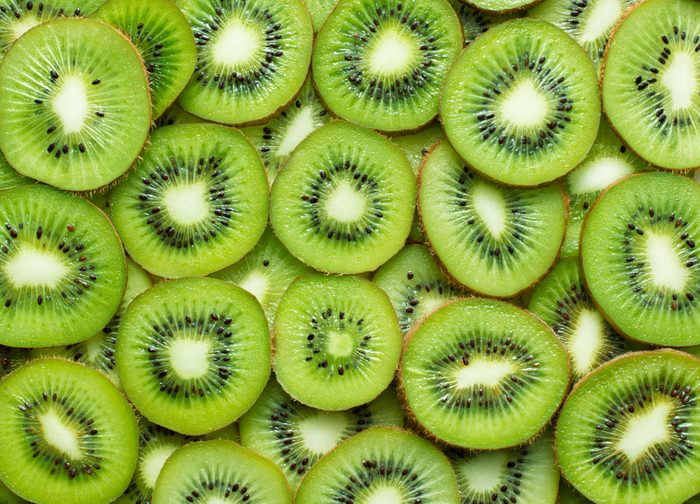
Kiwis
Kiwis are another fruit that has a positive effect on blood pressure. In one study, researchers examined how the fruit fares compared to apples. They found that eating three kiwis a day over eight weeks reduced blood pressure in people with slightly high blood pressure more so than eating one apple per day during the same time. A daily serving of kiwi was also found to reduce blood pressure in people with only mildly elevated levels. Kiwis are also an excellent source of vitamin C which can also improve blood pressure.
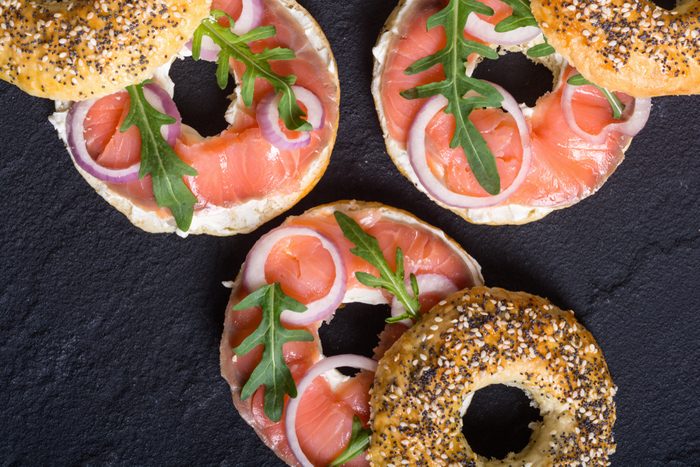
Salmon and fish with omega-3’s
An extensive body of research—including a meta-analysis of 70 randomized controlled trials—shows that consuming fish that has a high omega-3 content can help lower blood pressure. Fatty fish, such as salmon, lake trout, mackerel, herring, sardines, and tuna, contain the most omega-3 fatty acids and therefore confer the most benefit. Dietitians recommend eating fatty fish at least twice per week.
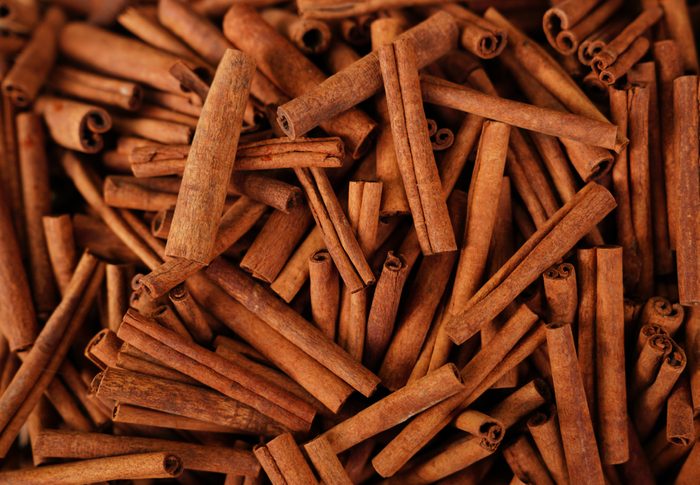
Cinnamon
This spice could lower blood pressure in the short term, according to an analysis of three studies published in the journal Nutrition. The researchers emphasize that it’s premature to conclude that this also indicates long-term effects, due to the limited number of studies conducted on cinnamon. But in the meantime, try a dash of cinnamon on your oatmeal or over fruit.
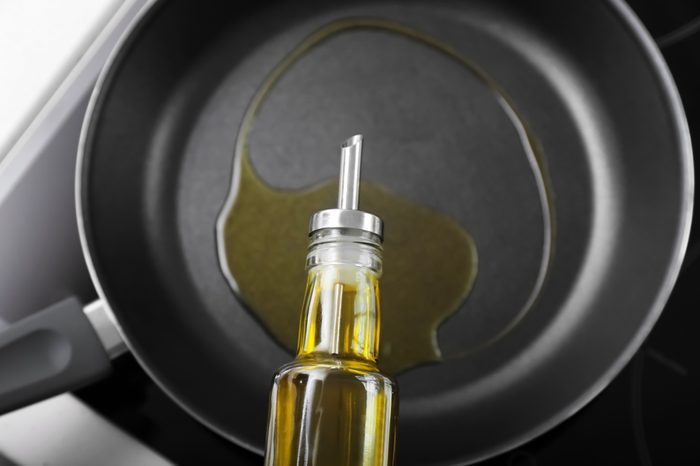
Olive oil
Add olive oil to your blood pressure shopping list. Numerous studies point to its blood-pressure-lowering effects. In one, published in the European Journal of Nutrition, participants took either an olive leaf extract or a placebo each day. After six weeks, the olive-leaf group had much lower blood pressure than the placebo group. The polyphenols in olives are known for fighting inflammation and reducing blood pressure, which is why olive oil is a key part of the DASH and Mediterranean diets. Next, check out the why the DASH diet if one of the only diets people can maintain long term.
